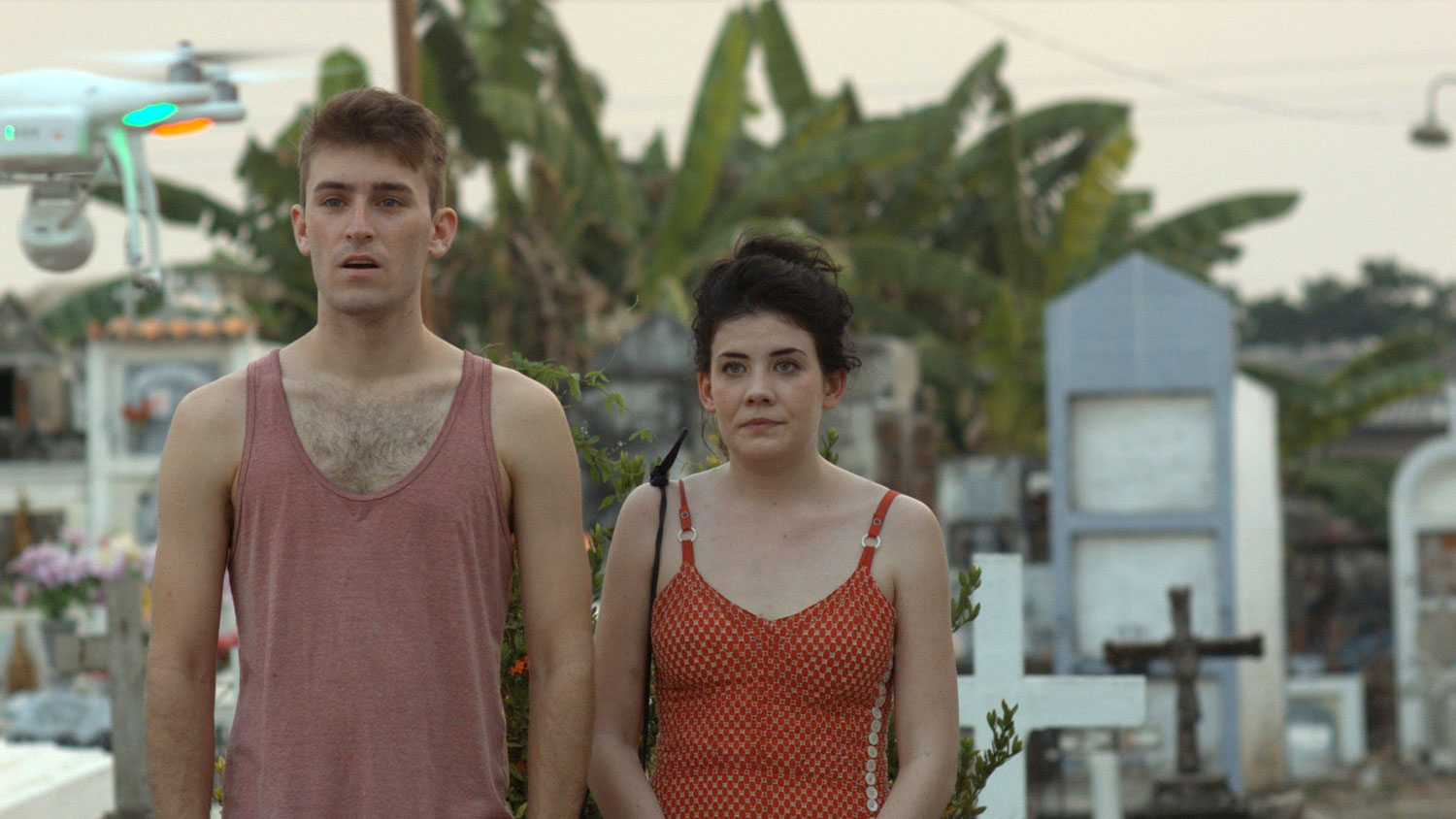Solid, dense, heavy. None of these characterize the internet in popular imagination, yet they describe Mass Effect, the tome-like volume on internet art from 2002 onwards edited by New Museum curator Lauren Cornell and Light Industry founder Ed Halter.
Nearly 500 pages of essays, talks and artist portfolios stand bookended by indices and forewords, and save for a pixelated cat on the cover (a still from Cory Arcangel’s 2009 Drei Klavierstücke), there is little in the book’s appearance to evoke its subject.
Or is there? One of Mass Effect’s critical achievements is to nuance our firmly held belief in the internet’s formlessness. Trevor Paglen’s photographs, accompanying a new interview, make visible overlooked or hidden structures powering telecommunications, from transoceanic cables and satellites to data centers where government workers rummage through conversations we thought were untouchable in the “Cloud.” Critic Gene McHugh notes in excerpts from his blog Post Internet that we rely on devices — metal, plastic, junk — to connect online. Discussing the tendency to label virtual artworks immaterial, he retorts, “What about the hardware displaying this content?”
What digital-born art’s rightful form is, and how best to stage it, are questions that have plagued new media curators since the dawn of net.art. Essays like “A Brief History of And/Or Gallery,” Paul Slocum’s chronicle of his Dallas space, respond by offering blueprints for curators to follow, while other contributions argue that all contemporary art, regardless of medium, is “internet aware,” a term that emerges to replace the contested, outmoded “post-internet” descriptor. As Guthrie Lonergan, the artist who popularized the term, explained in a 2009 talk at Light Industry, “even if you’re not making internet art, your art is probably going on the internet.”
The same is true of exhibitions, photographed and archived online — a (cyber)space where this sort of documentation feels at home given how critical image selection and juxtaposition are to contemporary web aesthetics. In discussing a gallery show curated by members of VVORK, the pioneering, pre-Tumblr artist blog, Olivia Jones reflects, “I thought, ‘I wish I could go see that,’ and then laughed when I realized I didn’t at all need to.” She adds that VVORK’s art world acclaim debunks art historian Claire Bishop’s much-contested thesis in “Digital Divide: Contemporary Art and New Media” (2012), included here with a commissioned response, that the mainstream art world ignores the digital.
Building on observations that the digital and material (and art) worlds exist tethered to one another, later texts like Hito Steyerl’s poetic “Too Much World: Is Digital Dead?” consider the extent to which web culture spills over into everyday experience. Artist Michael Wang describes Ryan Trecartin’s videos as set in a near future of social media and branding run amuck—where humans speak, at hyper speed, in broken marketing truisms. Important texts by Martine Syms and Karen Archey explore, respectively, the influence of the web on black and female bodies.
When bodies are so networked, does the network itself represent “the public”? Seth Price, in the anchoring essay “Dispersion” (2002–8), claims that interventions into mass, distributed media — despite relying on consumerism — are more accessible forms of public art than installations made for plazas or parks. This lesson is taken up by DIS collective, whose selection of photographs from their ongoing stock photo project shows how to dismantle and shrewdly reassemble corporate imagery. Working within the traditional framework of the gallery, Halter’s “The Centaur and the Hummingbird” uses the fact of networked existence to advance that internet artworks are “latter-day descendants of […] ‘idea art,’” and can thus be documented in the style of Conceptualism, for which there is a curatorial precedent of displaying, in fragments or objects, works that extend into abstract realms.
The sole blind spot in Mass Effect, which puts to bed any residual doubts about the establishment art world’s ties to digital culture, and is rightly destined to become a touchstone of contemporary art studies, is that it neglects to actively turn questions raised about art and the internet reflexively back onto publishing and the internet. Like art, publishing has also been deeply marked by the web and forced to think in “internet aware” terms, a fact revealed in Triple Canopy editor Alexander Provan’s “Chronicle of a Traveling Theory,” the text to most directly address publishing. In the essay, Provan asks how reaction to the controversial 2013 “International Art English” might have differed if it had been published in a print magazine with an “impervious paywall” — a thought that reveals how publishers today use paywalls, rather than printed pages, as measures of texts’ circulation potential and reach.
To give Cornell and Halter the benefit of the doubt, maybe ignoring the question of what publishing a book like Mass Effect means today wasn’t the result of neglect, but strategy. The question is vast enough to fill another book. Fingers crossed the next volume in the “Critical Anthologies in Art and Culture” series tackles the state of contemporary publishing.



